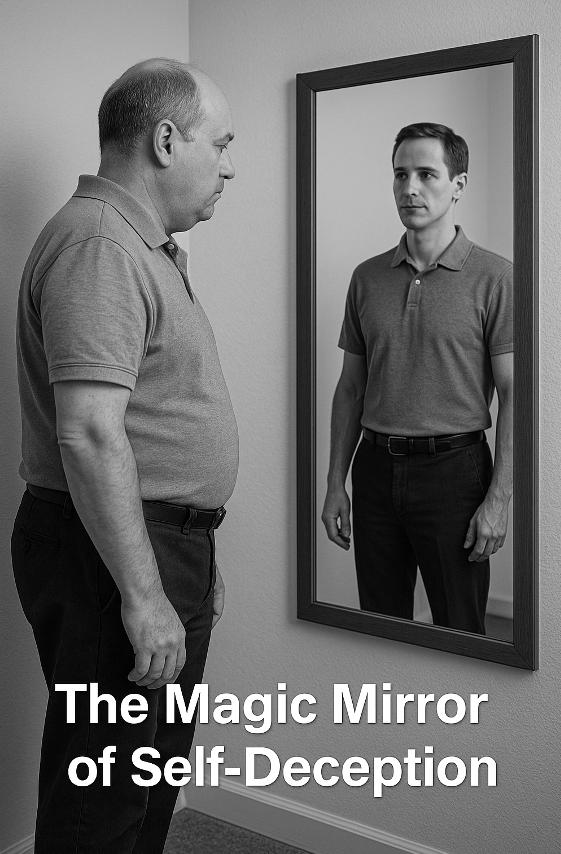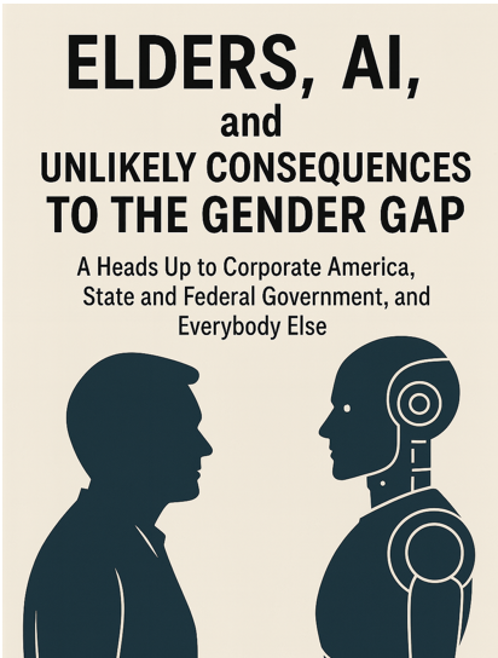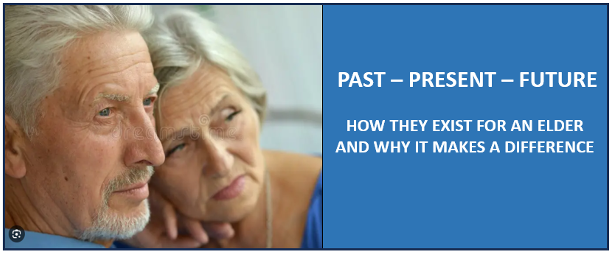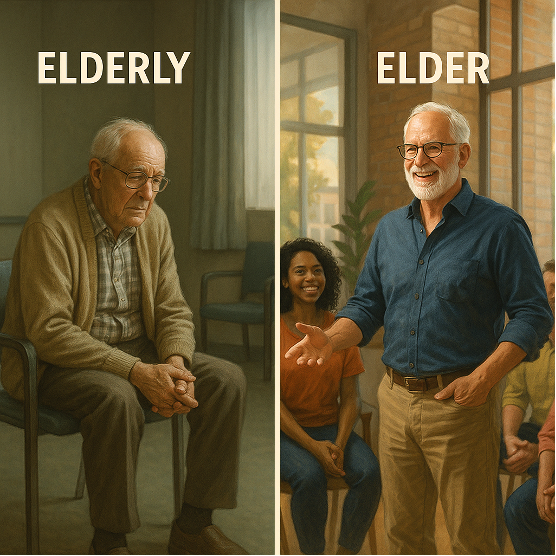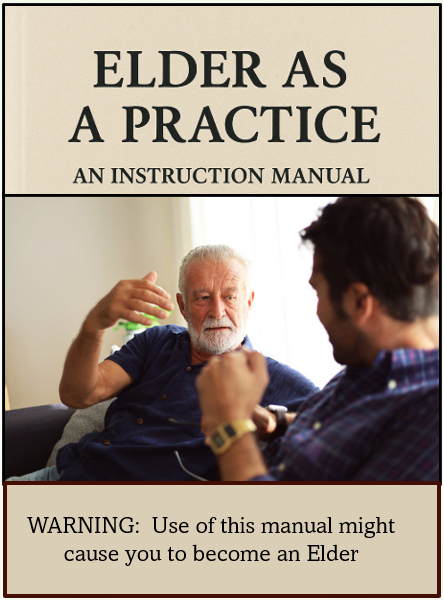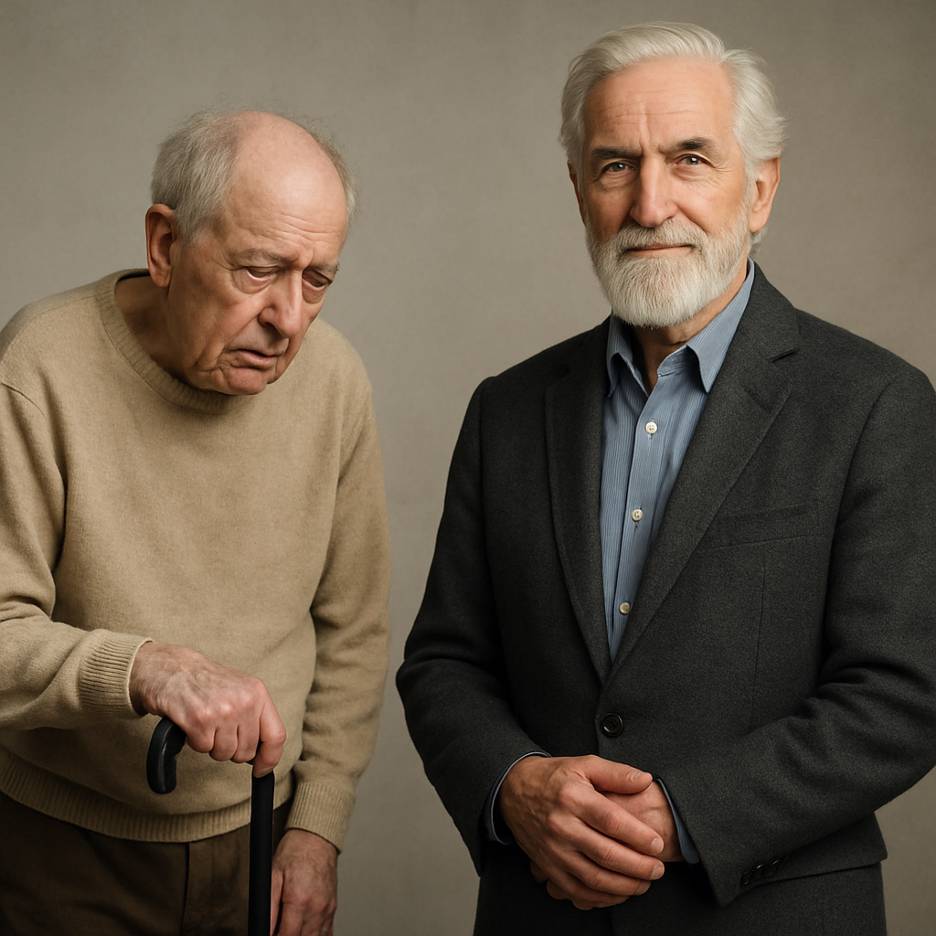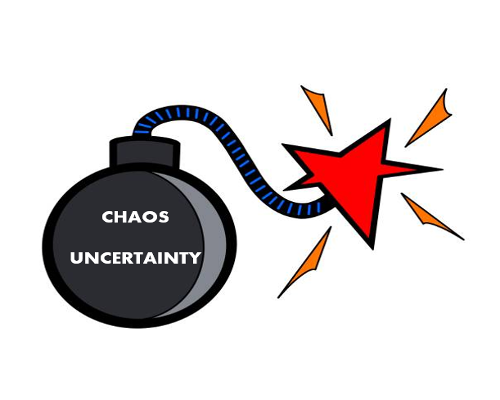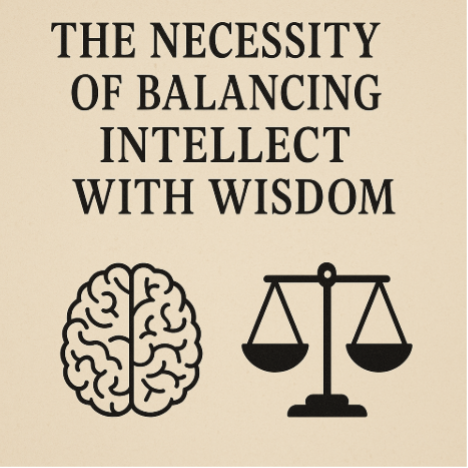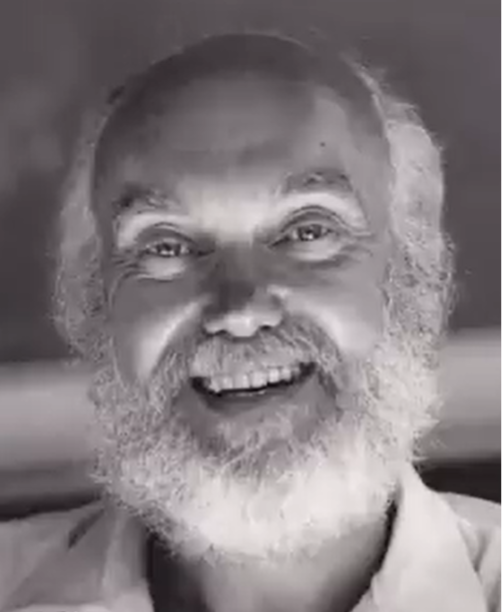SELFLESSNESS & THE SELF
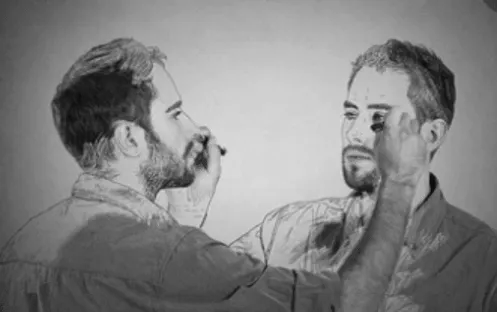
SELFLESSNESS & THE SELF
BACKGROUND STATEMENTS
Statement 1 – The Why
I know what I am doing is counterculture. It is the antithesis of the way it is. The "wants" are not in attendance, but the "needs" silently scream.
A culture like ours, pushed by the accelerating speed of change, where you start to become obsolete in your mid-forties, is not the best ecosystem to see eldering as value-added.
I appreciate the enormity of the task that I have undertaken. I recognize the difficulties of bringing it forth—David versus Goliath with a late-aged slingshot and a pebble.
But given the shape of the world, I am moved to do something. And my intuition, knowledge, growing partnerships, and current evidence show that elders can make a genuine difference.
I, and now others, feel compelled, duty-bound, obligated, and committed to metamorphizing late-age professionals into elders. Elders, as we distinguish them, can impact personal, business, community, or political conversations and those engaged in them. Impact these conversations, so that empathy, compassion, and understanding appear, where the common good is the outcome.
Statement 2 – Design Principle, Buckminster Fuller
Buckminster Fuller established that the triangle was a constant and universally powerful structure. Those three legs of the triangle together always stand firm.
The Contemporary Elder Institute's triangle is science, metaphysics, and mindfulness. That is our triangle. We use these approaches to design and deliver our older-to-elder programs.
Within this triangle, you can move Self to Selflessness. Selflessness is a critical component of eldership. But the social, familial, and constant electronic messaging that enhances and protects the Self is massive. But ultimately, it bankrupts the soul. Selflessness feeds the soul.
The science of Selflessness overwhelmingly supports the impact of Selflessness on enhancing the quality of life. Moreover, this science adds evidence and confidence to the design and delivery of our older-to-elder programs.
THE SCIENCE OF SELFLESSNESS
Selflessness allows elders to live with greater joy, peace, tranquility, and satisfaction. But the Self comes with considerably heavy armor preventing operating from Selfless. Unfortunately, the entrenched and untested belief that this heavy armor will protect one from life's wounds is terribly flawed.
Most people distinguish Selflessness as being concerned more with the needs and wishes of others than with one's own; unselfish. However, in our model, it has a deeper meaning. Selfless also means "Less Self." Operating with Less Self has tremendous advantages.
Michael Dambrun's article in the Library of Medicine, "Self-Centeredness and Selflessness: Happiness Correlates and Mediating Psychological Processes makes the point. The study tested the central assumptions using the Self-Centeredness/Selflessness Happiness Model. According to his study, while self-centered psychological functioning induces fluctuating happiness, authentic–durable happiness results from Selflessness.
Dambrun's factor analyses revealed that Self-Centeredness (assessed through egocentrism and materialism) and Selflessness (assessed through self-transcendence and connectedness to others) were two distinct psychological constructs. He concludes that who you are when you are Selfless is distinct from who you are when you are Self-centered— more content, equanimous, reflective, with a greater sense of dignity.
Another study, "Psychopathy to Altruism: Neurobiology of the Selfish–Selfless Spectrum" by Sonner and Gash, explained this phenomenon.
"The age-old philosophical, biological, and social debate over the basic nature of humans as being "universally selfish" or "universally good" continues today and is more conflicting than ever.”
The Sooner and Gash study analyzed advances in biology, genetics, and neuroscience, increasing our understanding of the human brain's evolution, features, and neurocircuitry underlying behavior in the Selfish–Selfless spectrum.
Their evidence supports the concept that altruistic potential is universal in human populations. Their evidence was based on population groups studies ranging from newborns, adopted children, incarcerated juveniles, twins, and mindfulness meditators.
Their findings point to the “critical role of neuroplasticity and the dopaminergic reward systems” in forming and reforming neural circuitry in response to personal experience and cultural influences in determining behavior in the Selfish–Selfless spectrum.
Sooner and Gash go on to conclude, "Individuals and populations can shift in the behavioral spectrum in response to cognitive therapy and social and cultural experience, and approaches such as mindfulness training for introspection and reward-activating compassion now are entering the mainstream of clinical care for managing pain, depression, and stress.”
The evidence points to the pliability of the brain, which can alter synapses and circuitry from Selfish to Selfless. And when Selfless, there are obvious and enduring psychological, physical, and spiritual benefits.
THE TAKEAWAYS
We realize there are significant gains in being, thinking, and doing when Selfless. We also recognize the adhesive and heavy armor that keeps the Self intact, preventing Selflessness. Therefore, our first order of business is to take off the armor.
By segregating the armor pieces into its component parts, the Self becomes more of an object; something commissioned, so it can now be decommissioned—a meaningful first step.
It goes along with Newtonian physics, "Two things cannot occupy the same space at the same time." So, getting the Self out, Selfless naturally takes its place. And when Selfless gives greater peace, ease, grace, well-being, and wisdom.
Furthermore, this quality of selflessness allows an elder to impact the nature of conversations and the people having these conversations so that equanimity and harmony occur.
Having our work be evidence-based and witnessing these changes in our elders confirms and reinforces what is possible. It confirms our premise if elders were recognized and embedded into people’s conversations, the nature, context, and content of these conversations would be altered. And that is exactly what the world needs.
THE CONTEMPORARY ELDER RETREAT
We are moving the retreat to the Fall of 2023. Time is needed for enrollment, preparing people for the retreat, and seeing how to sustain and support the participants of the previous retreat for those who are experiencing operating as an elder.
When the dates are settled, we’ll keep you posted.
And I need time for me to complete writing my book, “The Elder Effect: How to Save The World from Itself.”
Mutual entrainment is brainwave synchronization or neural entrainment. Our brainwaves, those large-scale electrical oscillations in the brain, naturally synchronize with the rhythm of certain external stimuli. In the case of elders, the external stimuli synchronize with an elder's magnanimity and higher wisdom. As a result, people become what the elder is.
